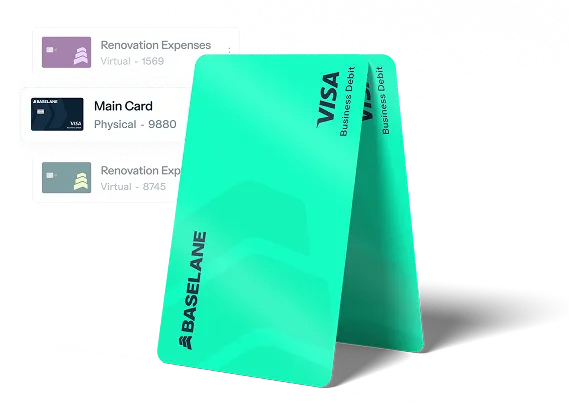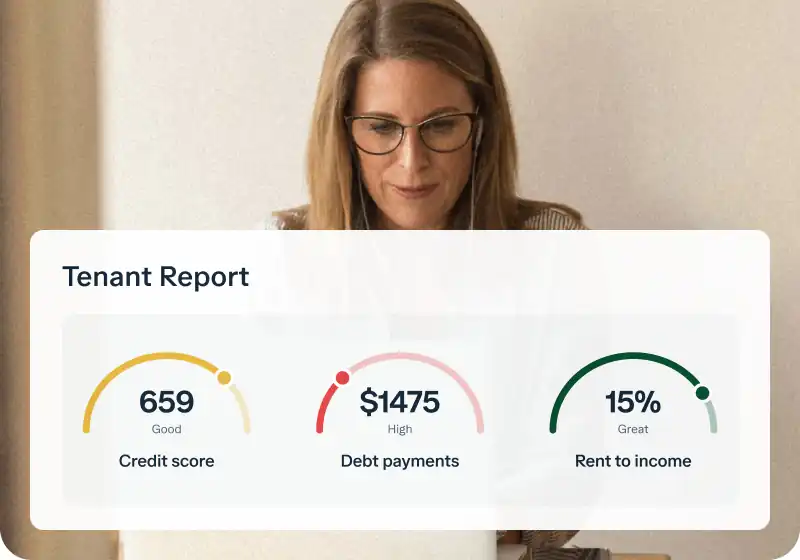Choosing the right method for collecting rent payments is a critical decision for landlords. The method you choose affects speed, cost, security, and how easily tenants can pay on time. Whether it’s ACH transfers, wire transfers, or traditional paper checks, understanding the pros and cons of each can help you simplify rent collection and maintain a steady cash flow.
Key takeaways
- ACH transfers are generally the most recommended method for rental payments due to their low cost and suitability for recurring transactions.
- Wire transfers are fast but expensive and typically not practical for monthly rent collection.
- Paper checks are declining in use due to their slow processing time and higher risk of loss or fraud.
- Electronic methods like ACH are becoming standard, with only a small percentage of renters still using checks or cash.
- Integrated online platforms often utilize ACH to provide landlords with automated rent collection and better financial tracking.
Payment methods for rent collection
Rent collection isn’t one-size-fits-all. ACH transfers, wire transfers, and paper checks each have their own timelines, fees, and workflows. Understanding how each method works is key to finding the best way to collect rent from tenants—one that balances speed, security, and convenience for both you and your renters.
ACH transfer
An ACH transfer moves money electronically between bank accounts via the Automated Clearing House (ACH) network. This network is managed by Nacha (National Automated Clearing House Association).
ACH payments are commonly used for direct deposit, bill payments, and increasingly, rental payments. They can be initiated as either a "push" (where the payer sends funds) or a "pull" (where the recipient initiates a debit). For landlords using rental software, this is often a "pull" from the tenant's bank account after the tenant has authorized it.
Wire transfer
A wire transfer is an electronic transfer of funds directly from one bank to another. When comparing bank wire vs ACH, both are electronic, but wires are immediate and costly, while ACH is slower but cheaper
The swift nature of wire transfers means they are usually irreversible once sent. Using a dedicated bank account for rental property can help organize incoming payments regardless of the method.
Paper check
A paper check is a physical document used as a written order to a bank to pay a stated amount of money from the account holder's funds. The recipient must deposit the check, and the funds are transferred through the banking system via a clearing process.
This traditional method requires physical handling and transportation. While historically common, its usage is decreasing significantly in favor of electronic methods.
Comparing ACH, Wire, and checks for rent payments
Choosing the optimal payment method requires comparing key factors relevant to landlords and tenants. We need to look at how much each method costs, how quickly funds are available, the level of security they offer, and how reliable they are. Convenience for both parties is also a major consideration when establishing payment policies.
Cost Comparison
Cost is a primary factor for landlords managing multiple properties and tenants. Fees associated with payment methods can impact your net operating income. Understanding the typical costs helps you set policies that benefit both you and your tenants.
ACH payment solutions are typically the most cost-effective option for electronic transfers. The median cost is around $0.26–$0.50 per transaction. These low fees make ACH particularly attractive for recurring monthly payments like rent.
Wire transfers are significantly more expensive than ACH or checks. They typically range from $15 to $50 or more per transfer. This high cost makes them impractical for routine monthly rent payments.
Paper checks also incur costs, although they may not be immediately obvious bank fees. When accounting for processing time, administrative effort, postage, and potential bank fees for deposit or bounced checks, they average around $3.00 per transaction. While the direct fee per check might be low or non-existent, the overhead adds up.
If you're working with a property manager, their fee structure may include property managers charges for processing certain payment types, especially wires or manual checks.
Speed and processing time
The speed at which rent payments are processed and funds become available is crucial for managing cash flow. Delays can impact a landlord's ability to cover property expenses or make timely mortgage payments.
ACH transfers usually take 1–3 business days to process. Sometimes, they can take up to 5 business days. This processing time needs to be factored in when setting rent due dates and late fee policies, helping you understand when rent is considered late.
Wire transfers are the fastest method. They are often processed the same day or within hours for domestic transfers. Their speed is why they are used for urgent transactions, but again, their cost usually outweighs this benefit for rent.
Paper checks are the slowest method. They require physical delivery and take 2–5 days or more to clear after being deposited. This can create uncertainty about fund availability and delays in reconciliation. Using a structured property management bank account structure can help track deposits once they clear.
Security and fraud risk
Security is a major concern for both landlords and tenants. Protecting sensitive financial information and preventing fraudulent transactions is paramount. Different payment methods carry varying levels of risk.
ACH transfers are generally considered more secure than paper checks. Electronic processing reduces the risk of physical loss, theft, or forgery. While ACH fraud exists (like unauthorized debits), the network has rules and protections in place.
Wire transfers are relatively secure in that the transfer happens directly between verified bank accounts. However, once a wire is sent, it is very difficult or impossible to reverse. This makes them risky if the recipient's details are incorrect or if the transfer is part of a scam.
Paper checks carry a higher inherent risk of fraud compared to electronic methods. They contain sensitive information like bank account and routing numbers, which can be intercepted or duplicated. Checks can be altered or forged, leading to potential financial loss for the account holder.
Inconsistent or delayed payments not only affect cash flow but can become indirect reasons for rent increase, especially when landlords must account for late or missing rent.
Reliability and payment guarantee
Understanding the reliability of a payment method and what happens if a transaction fails is important for consistent income. Landlords need predictable payment streams to manage their properties effectively. Different methods handle failed transactions differently.
ACH payments are generally reliable for recurring payments, but they can be returned (e.g., for insufficient funds or incorrect account details). ACH returns typically take a few days to process.
Wire transfers offer a high degree of certainty once initiated because funds are moved directly between banks. However, their irreversibility means that if funds are sent to the wrong account due to an error, recovery is extremely difficult. They offer a "guarantee" of sending, but not of receiving by the intended party, if the details are wrong.
Paper checks can bounce if the tenant has insufficient funds. This results in delays, bank fees for both parties, and the need for the landlord to pursue the payment again. The payment is not guaranteed until the check has fully cleared the banking system. Dealing with bounced checks is part of needing to collect unpaid rent.
Convenience
Convenience matters for both landlords and tenants. An easy payment process encourages timely payments and reduces administrative burden. The setup, execution, and tracking aspects of each method contribute to its overall convenience.
ACH is highly convenient, especially when integrated into online rent collection platforms. Tenants can set up recurring auto-payments, while landlords benefit from automated tracking and seamless updates to their rent rolls.
Wire transfers are inconvenient for regular rent payments. They require tenants to visit their bank or log in to their online banking portal for each transaction, initiating it manually. Their high cost also makes them inconvenient for routine use.
Paper checks are becoming increasingly inconvenient for many. Tenants must remember to write and mail or deliver a check each month. Landlords must physically receive, transport, and deposit checks, then manually track payments.
Why ACH is often the best for rental payments
ACH transfers are widely considered the best method for collecting recurring rental payments. They offer a low transaction cost, which is highly beneficial for managing rental property expenses. The ability to set up automated, recurring payments makes it easy for tenants to pay on time and convenient for landlords to receive consistent income. While not instantaneous, the 1–3 business day processing time is acceptable for most monthly cycles.
ACH is also relatively secure compared to checks and provides electronic tracking. This helps simplify bookkeeping and reconciliation for landlords. Many modern rent collection apps and platforms utilize ACH as their primary payment rail.
Wire transfers are rarely used for typical monthly rental payments because they are expensive and inconvenient for recurring transactions. They might be used in unusual situations requiring immediate funds transfer, like a large security deposit for a commercial lease or a quick payment needed to secure a property purchase, brrrr method financing.
Checks require manual handling, are prone to postal delays, can be lost or stolen, and carry a significant risk of fraud, such as forgery. The process of depositing and waiting for checks to clear is cumbersome for landlords. Electronic options offer significant advantages that checks simply cannot match for modern property management, such as facilitating the calculation of annual rent.
When comparing ACH vs debit card payments, ACH tends to have lower fees and is better for recurring rent.
Collect Rent the Smart Way with Baselane
While ACH, wire transfers, and checks are the main ways money moves, most landlords today don’t use them manually. Instead, they rely on online platforms or property management software that streamlines rent collection and management.
Modern landlord platforms use ACH as the backbone but add automation, tracking, and reminders to make the process easier. Tenants can pay directly from their bank accounts, and landlords get notified, paid, and reconciled—all without manual work.
Using a platform like Baselane gives landlords an all-in-one solution. It combines rent collection, bookkeeping, and banking tools built specifically for real estate.
Start collecting rent with Baselane today!
FAQs
What is the difference between ACH and wire transfer?
ACH transfers move funds electronically through a batch process, typically taking 1-3 business days. Wire transfers move funds directly and individually between banks, often completing within hours. Wire transfers are generally more expensive.
Is ACH safe for rent payment?
Yes, ACH is considered a secure method for rent payment. It is processed electronically, reducing the risks associated with paper checks like loss or forgery. Using a reputable platform that facilitates ACH adds layers of security.
Are ACH payments safer than checks?
Yes, ACH payments are generally safer than checks. Checks contain sensitive information and are vulnerable to physical theft and forgery. ACH transfers occur electronically within regulated networks, offering greater security and audit trails.
What happens if you use the wrong routing number for a transfer?
If you use the wrong routing number for an ACH or wire transfer, the transaction will likely fail. For ACH, it would be returned. For a wire, it might be rejected or potentially sent to the wrong account, which is difficult to reverse.












.jpg)

.webp)


.jpg)